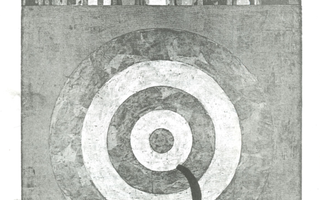{shortcode-31334abc08418c09b8c18ce948af123b7a4bace2}“‘Oumuamua,” the first interstellar object observed in the solar system, could be a probe sent by intelligent life elsewhere in the universe, according to a paper published by Astronomy Department Chair Abraham “Avi” Loeb and Shmuel Bialy, a postdoctoral fellow at the Harvard-Smithsonian Center for Astrophysics.
‘Oumuamua — which Loeb said means “a visitor from a great distance” in Hawaiian — was first discovered in October 2017 by a telescope in Hawaii. It has since moved out of the range of satellites and rockets, making it very difficult to study its composition and leaving its galactic origins a mystery.
The interstellar object is an anomaly for several reasons, Loeb said. After analyzing sunlight reflected from its surface, he and Bialy concluded that the object is at least five to ten times longer than it is wide and potentially cigar- or pancake-shaped, much more elongated than the typical asteroid.
But ‘Oumuamua’s defining characteristic — and the primary reason why scientists believe it could be a probe from an alien civilization — is the “extra push” in its trajectory, which propels it forward more than the sun’s gravity alone could, Loeb said. One possibility is that ‘Oumuamua is a comet because they too have an extra push, caused by ice evaporating on their surface and creating a rocket-like appearance. But Loeb said the comet hypothesis doesn’t match observations of ‘Oumuamua.
“In that case, we should have seen a cloud of dust or gas around it, because when you look at comets, you see a cometary tail,” he said. “But there is no evidence for anything like that.”
Loeb instead theorized that ‘Oumuamua’s unusual trajectory was caused by “radiation pressure” from the sun pushing it like a sail. For this to be the case, the object would have to be less than a millimeter in thickness.
“Light sails — sails that are pushed by light — are being contemplated now in space exploration,” he said.
Loeb currently chairs the Breakthrough Starshot Initiative, which aims to create this exact kind of technology for astronomical research. He and others are in the process of designing a lightweight sail propelled by a powerful laser that will be able to search for life in the Alpha Centauri star system. He suggested that ‘Oumuamua might be a similar effort on the part of other civilizations.
“I admit, my imagination is limited to what I know, but that’s true for everyone,” Loeb said. “I was inspired by my involvement in this project.”
Loeb said he was surprised by the overwhelming interest — both from distinguished astronomers and the general public — in his paper. He said the paper was accepted for publication only a few days after its submission, an unusually fast turnaround in the scientific community.
“I think the public is very interested in this subject, and scientists very much shy away from this,” Loeb said. “For me, personally, it’s a completely legitimate thing for us to consider because a quarter of all stars have habitable planets like the Earth that could have liquid water on its surface and the chemistry of life as we know it.”
Despite ‘Oumuamua’s puzzling characteristics, Loeb was hesitant to definitively classify it as an object of alien origin.
“I prefer not to assign probabilities to the nature of ‘Oumuamua,” he wrote in an email. “We just need to be practical and collect more data on it or other members of its population. The interpretation of existing and future data is my plan for the future.”
—Staff writer Amy L. Jia can be reached at amy.jia@thecrimson.com. Follow her on Twitter @AmyLJia.
—Staff writer Sanjana L. Narayanan can be reached at sanjana.narayanan@thecrimson.com.
Read more in News
Data Could Decide the Harvard Admissions Trial. Here’s How and WhyRecommended Articles
-
 'I Can't Tell You Where the Money's Going to Come From,' Bacow Says of Endowment Tax
'I Can't Tell You Where the Money's Going to Come From,' Bacow Says of Endowment Tax -
 Queer in Print
Queer in Print -
 Undergraduate Council President and VP Say UC Will Remain Neutral on Admissions Suit
Undergraduate Council President and VP Say UC Will Remain Neutral on Admissions Suit -
 Why The Hell Don't Harvard Students Vote?
Why The Hell Don't Harvard Students Vote? -
 Following 2017 Controversy Over Origins of the Universe, New Paper Offers Test for Cosmic Inflation
Following 2017 Controversy Over Origins of the Universe, New Paper Offers Test for Cosmic Inflation













